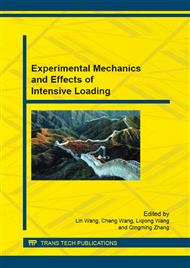[1]
Jigui Cheng, Peng Song, Yanfei gong, etc. Fabrication and characterization of W-15Cu composite powders by a novel mechano-chemical process, J. Materials Science and Engineering A. 488 (2008) 453-457.
DOI: 10.1016/j.msea.2007.11.022
Google Scholar
[2]
S. -H. Hong, B. -K. Kim. Fabrication of W-20 wt % Cu composite nanopowder and sintered alloy with high thermal conductivity, J. Mater. Lett. 57 (2003) 2761-2767.
DOI: 10.1016/s0167-577x(03)00071-5
Google Scholar
[3]
A. Ibrahim, M. Abdallah, etc. An experimental investigation on the W-Cu composites, J. Materials and Design. 30 (2009) 1398-1403.
Google Scholar
[4]
Pingan Chen, Qiang Shen, etc. The mechanical properties of W-Cu composite by activated sintering, J. Int. Journal of Refractory Metals and Hard Materials. 36 (2013) 220 - 224.
DOI: 10.1016/j.ijrmhm.2012.09.001
Google Scholar
[5]
M. Amirjan, N. Parvin, K. Zangeneh-Madar. Mutual dependency of mechanical properties and contiguity in W-Cu composites, J. Materials Science and Engineering A. 527 (2010) 6922-6929.
DOI: 10.1016/j.msea.2010.06.076
Google Scholar
[6]
Jiten Das , U. Ravi Kiran. Hardness and tensile properties of tungsten based heavy alloys prepared by liquid phase sintering technique, J. Int. Journal of Refractory Metals & Hard Materials. 27 (2009) 577-583.
DOI: 10.1016/j.ijrmhm.2008.08.003
Google Scholar
[7]
A. Ghaderi Hamidi, H. Arabi, S. Rastegari. Tungsten-copper composite production by activated sintering and infiltration, J. Int. Journal of Refractory Metals and Hard Materials. 29 (2011) 538-541.
DOI: 10.1016/j.ijrmhm.2011.03.009
Google Scholar
[8]
D. G. Kim, G. S. Kim, M. J. Suk, etc. Effect of heating rate on microstructural homogeneity of sintered W-15wt%Cu nanocomposite fabricated from W-CuO powder mixture, J. Scripta Mater. 51 (2004) 677-681.
DOI: 10.1016/j.scriptamat.2004.06.014
Google Scholar
[9]
XiaoLiang Shi, Mang Wang, Song Zhang, etc. Fabrication and properties of W-20Cu alloy reinforced by titanium nitride coated SiC fibers, J. International Journal of Refractory Metals and Hard Materials. 41 (2013) 60-65.
DOI: 10.1016/j.ijrmhm.2013.02.002
Google Scholar


